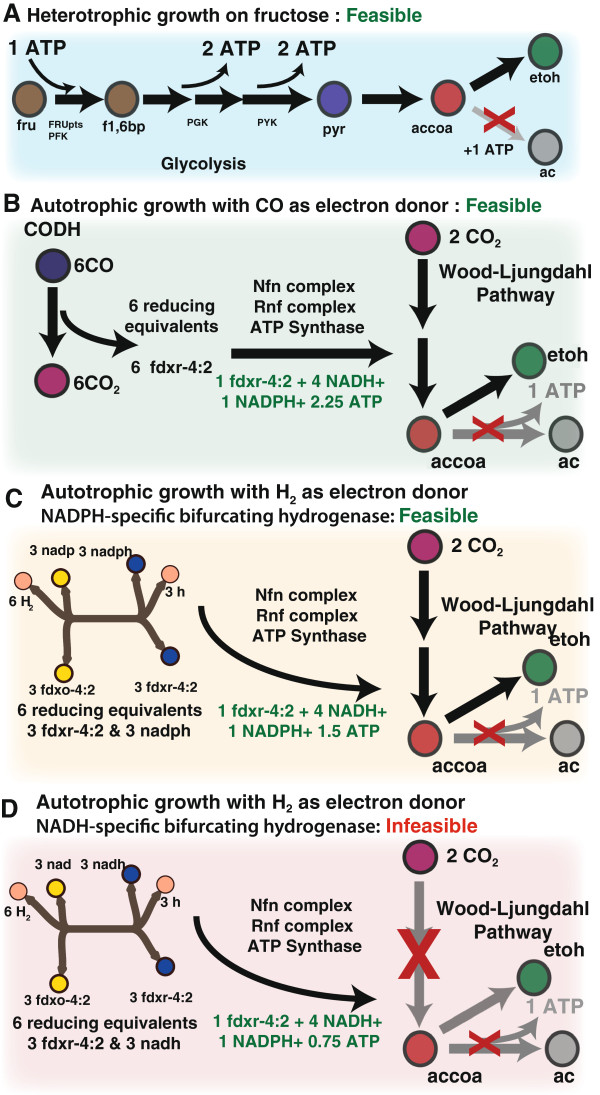Figure 5.

Insights from modeling genetic perturbation into aspects of energy conservation in C. ljungdahlii. (A) Deletion of acetate kinase during growth on fructose shifts the flux from acetate towards ethanol. (B) Growth is feasible when CO is the electron donor despite the deletion of acetate kinase. (C) Growth is feasible when H2 is the electron donor despite the deletion of acetate kinase if the bifurcating hydrogenase is NADPH dependent. (D) Acetate kinase is essential for autotrophic growth with H2 as the electron donor if the bifurcating hydrogenase is NADH dependent. Modeling analysis reveals an insufficient ATP in the absence of ackA if the hydrogenase is NADH dependent (0.75 ATP) . However, if the bifurcating hydrogenase is NADP dependent, sufficient ATP (1.5 ATP) is generated to enable ethanol production in the absence of ackA.
